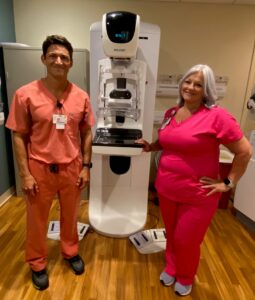Radiology Services

- ABI Studies (ankle brachial index)
- Arthrography
- CT
- Fluoroscopy Procedure.
- Mammography (3D)
- MRI
- Nuclear Medicine
- Osteoporosis Screening (DEXA)
- Ultrasound
NOTE: The American College of Radiology recommends a baseline mammogram starting at the age of 40 as a screening for breast cancer.
All tests require a physician order. To schedule Radiology appointments, please call 229-243-3331.
